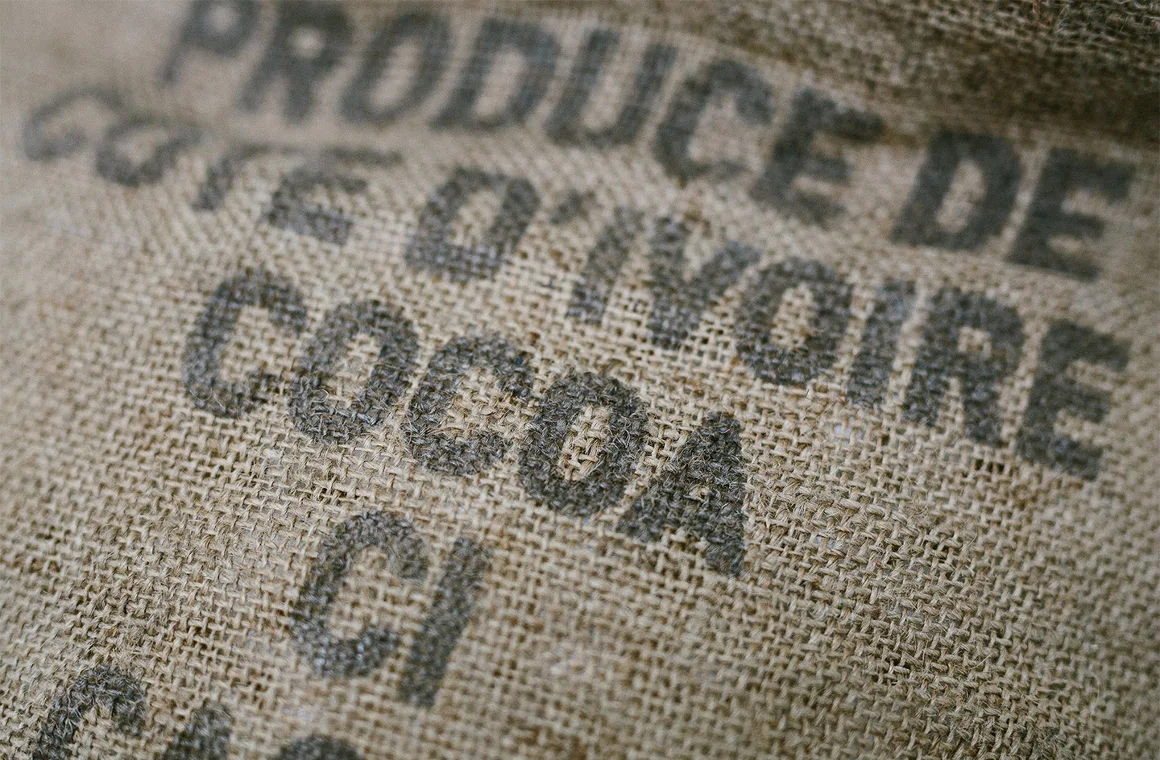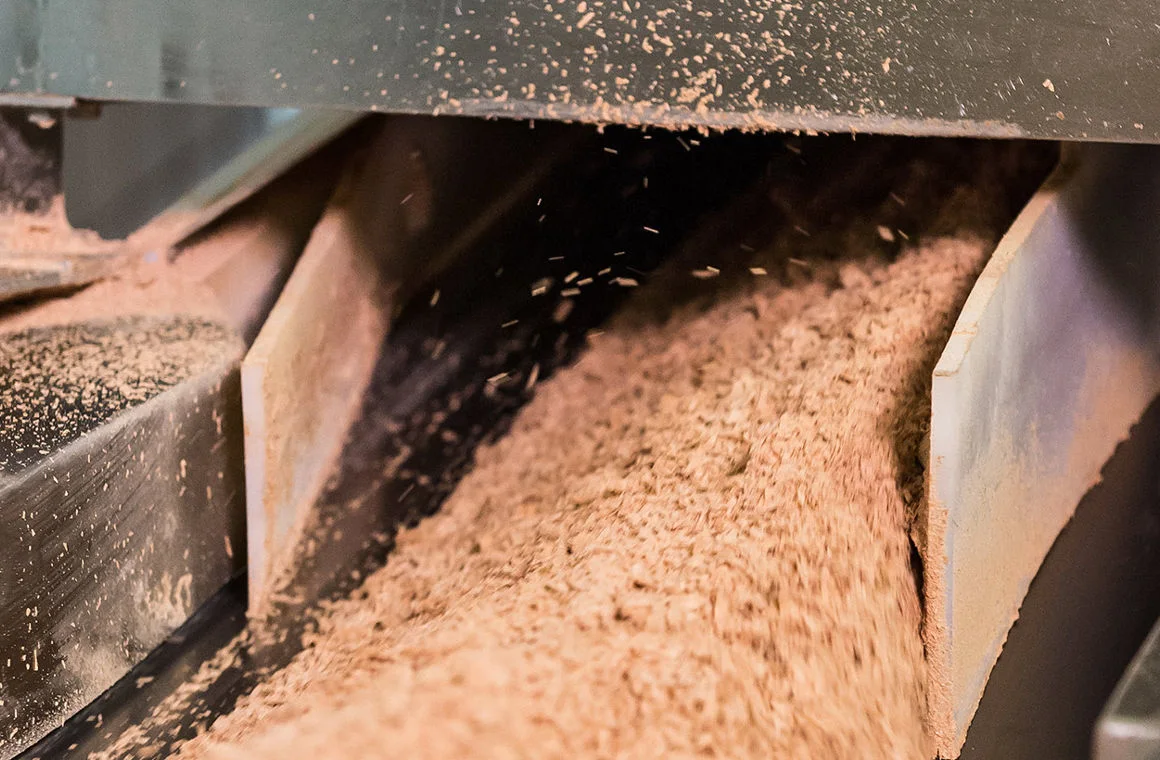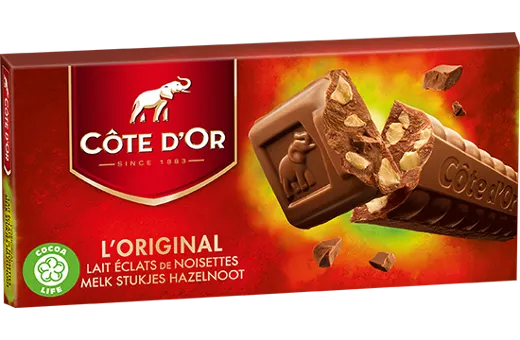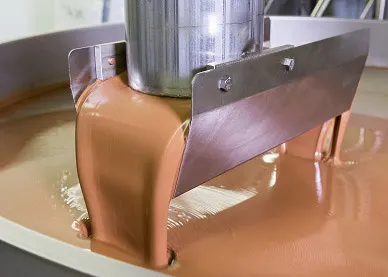FROM BEAN TO BAR
THE ART OF MAKING CHOCOLATE
Creating chocolate is a long, complex process that begins with cocoa. See here the many steps required to turn cocoa beans into bars of chocolate:
Read more on
Cleaning, roasting, crushing, and separating
Most beans are transferred into sacks and transported around the world after drying, so in order to prevent mold, it's important that they're completely dry at this point. When the beans arrive at the factory, they are sifted to ensure only high quality cocoa beans remain.
The cleaned beans are roasted in rotating ovens at very high temperatures (100-150°C) for 30 minutes to two hours. The heat brings out flavor and aroma, and it dries and darkens the beans. The exact temperature and roast time are part of the chocolate maker's recipe, and will have been worked out with careful experimentation and lots of tasting!
The beans are then seived —not too finely — to separate the cocoa beans, known as nibs, from the shells.

Making cocoa liquor, cocoa butter, and cocoa powder
Crushing and grinding the cocoa nibs creates a thick paste called cocoa liquor, an ingredient in chocolate.
Cocoa liquor can also be pressed at high pressure to produce cocoa butter (another ingredient of chocolate) and cocoa powder (which is used for baking or, when mixed with sugar and milk, for chocolate beverages).

Mixing ingredients
During the process different ingredients are mixed in different amounts to create the variety of chocolate flavors we’re familiar with.

- Milk chocolate is a blend of cocoa liquor, cocoa butter, milk powder, and sugar.
- Dark chocolate is a blend of cocoa liquor, cocoa butter, and sugar.
- White chocolate is a blend of cocoa butter, milk powder, and sugar.
The blended chocolate goes through a refining process involving heavy rollers, which grind down the particles and improve the texture.
Conching, a process of grinding, mixing, and heating that every manufacturer does differently, is the important final step for flavor development and results in a liquid chocolate with the desired taste and viscosity.

Turning liquid chocolate into a bar
Large machines cool and heat the liquid to precise temperatures in order to form the proper cocoa butter crystals - a stable fat crystal means smooth, shiny bars.
Great chocolate should have a shiny finish and a good “snap” – that clean clicking sound when you break a piece off.
The final step in making a finished chocolate bar is pouring it into a mould, those moulds come in all shapes and sizes: flat, round, triangular. If the final product has fillings or other ingredients such as almonds, hazelnuts, or raisins, those are added at this point. Delicious!
After the molds of liquid chocolate come out of the cooler, the solid chocolate is un-molded, wrapped, packaged, boxed, and shipped off to wholesalers and retailers.
Ready to give us moments of joy!
